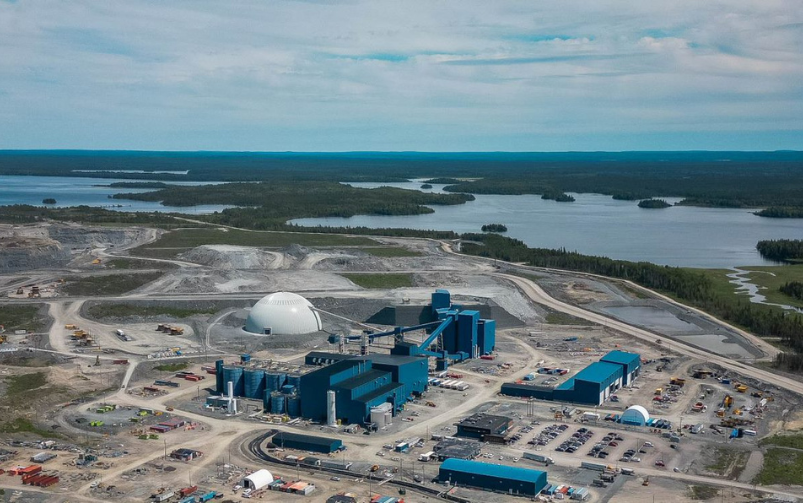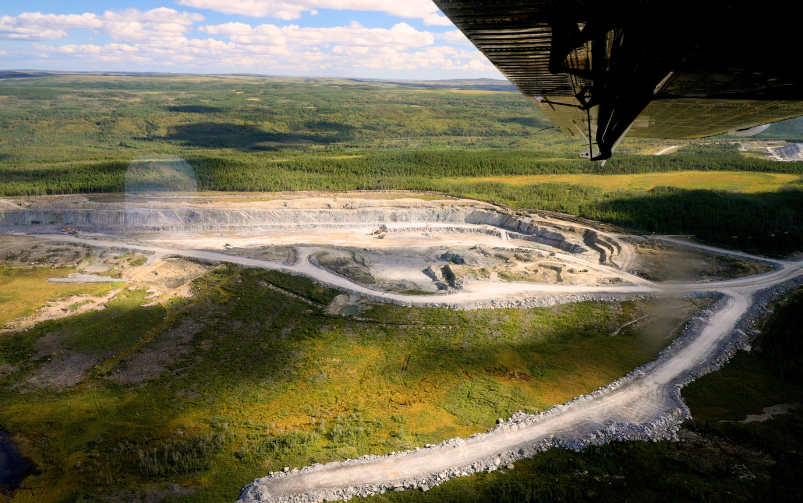Mining industry associations cautioned that some measures in the budget have the potential to disincentivize mineral exploration financing of Canadian companies. Benoit Debaix via Unsplash.
The federal government is aiming to speed up the development of new mining projects and has introduced initiatives in the 2024 budget to streamline the permitting and impact assessment processes, as well as lower barriers for Indigenous communities to participate in resource projects.
However, industry associations are raising concerns that the government’s move to increase capital gains taxes on corporations, trusts and wealthy individuals will harm mineral exploration in Canada and undercut the value of the recently extended mineral exploration tax credit (METC), which was extended by another year until March 31, 2025.
The changes will see all businesses and trusts pay income tax on two-thirds of their capital gains earnings, up from 50 per cent previously. That increase will also apply to individuals with capital gains earnings over $250,000.
“That, we feel, significantly reduces the value of the mineral exploration tax credit to many individuals,” said Photinie Koutsavlis, vice-president of economic affairs and climate change at the Mining Association of Canada (MAC), in an interview with CIM Magazine.
Koutsavlis said the changes could push individual investors captured by the new threshold to look to invest in junior miners in other jurisdictions. “We feel this is an unintended consequence by the department of finance, perhaps [from] not understanding the full impact it has on the exploration sector.”
Lisa McDonald, executive director of the Prospectors and Developers Association of Canada (PDAC), told CIM Magazine in an interview that the association was also concerned about the change, though it applauded the government’s renewal of the METC.
In its February 2024 submission of budget recommendations to the House of Commons’ finance committee, PDAC recommended that the government adjust the capital gains tax treatment of flow-through shares to expose less of the investment to taxation. The current regime has made flow-through shares attractive primarily to ultra high-net worth individuals, meaning that a “relatively small group” of investors are generating an outsized share of flow-through share funding. Adjusting it could expand participation in the funding mechanism to a broader group of Canadian investors, PDAC said in its submission.
“We do feel there is an opportunity for government between now and when the budget implementation act comes forward to…adjust that cost basis, and that can potentially offset what we believe is an unintended consequence [of the capital gains changes],” McDonald said.
Faster permitting times
The budget promised to significantly reduce timelines for new mines and other major projects with a host of initiatives. The government set a target of five years or less to complete federal impact assessment and permitting processes for federally designated projects, and two years or less for permitting of those that aren’t federally designated.
It is a change the industry has long called for. McDonald said PDAC has seen projects take up to 10 years or more to get through the permitting and impact assessment process.
The budget also allocated $9 million over three years to the clean growth office within the Privy Council Office to reduce interdepartmental inefficiencies, improve data-sharing between departments and ensure new permitting timelines are upheld through federal departments. It also committed to establishing a federal permitting coordinator, and to build a federal permitting dashboard to report on the status of large projects “to improve predictability for project proponents” and increase transparency.
“The fact they put some resources up against this work is important. It signals to industry that government is clearly taking this very seriously,” Koutsavlis said, but added that she wanted to see the government move to implement those promises. “One issue that’s been plaguing Canada for many years is investor confidence that projects can be built. If you don’t have [that], you don’t have investments in your projects and you’re not able to move forward.”
The budget also included a commitment to amend the Impact Assessment Act to respond to the October Supreme Court of Canada ruling that parts of the legislation are unconstitutional.
Indigenous loan guarantee program
Another major initiative will see the federal government provide up to $5 billion in loan guarantees to facilitate Indigenous communities’ equity ownership in major projects. The program is meant to support Indigenous participation in natural resources and energy projects of all stripes that “prioritize economic reconciliation and self-determination,” the budget said.
Natural Resources Canada, which will oversee the program, will also receive $3.5 million over two years, starting 2024-25, to support capacity funding for Indigenous communities seeking to make loan applications. The Canada Development Investment Corporation—a Crown corporation that falls under the federal finance department—will start up a new subsidiary to administer lending.
The First Nations Major Projects Coalition cheered the program in an April 16 press release. “By committing this backstop of financial support to Indigenous equity participation, the Government of Canada is taking a significant step toward meaningfully advancing economic reconciliation in this country,” said Sharleen Gale, the FNMPC’s chair and Chief of the Fort Nelson First Nation, in the release.
First Nations have long struggled to take equity positions in major projects, with one reason being that a section of the Indian Act prevents First Nation governments and status individuals from using reserve assets or land as collateral. Instead, most must borrow 100 per cent of their investment of an equity loan, which often leads lenders to charge higher interest rates that almost eliminate any financial benefit for the First Nation.
The coalition said that its own research has shown government loan guarantees can help reduce interest rates and shorten amortization periods.
“That provision is a really key, transformative step for empowering Indigenous participation in major projects,” said Keerit Jutla, president and chief executive officer of the Association for Mineral Exploration, in an interview with CIM Magazine.
The budget also announced plans to improve Indigenous capacity for consultation on major projects and to establish a Crown consultation coordinator specific to consultation on regulatory permits for projects that do not undergo federal impact assessments.
Clean technology tax credit
The government also modified the clean technology manufacturing investment tax credit (CTMITC) in response to industry concerns. The CTMITC is a refundable tax credit of up to 30 per cent of the capital cost of new machinery and equipment for a critical minerals mine. The government initially planned to require all or almost all of a deposit to be one of six battery metals, which Koutsavlis said was at odds with much of Canada’s geology, which has predominantly polymetallic deposits that therefore would have been excluded from eligibility. The budget lowered eligibility to machinery and equipment costs related to deposits that are “primarily” made up of one of the six battery metals.
While Koutsavlis said MAC saw the change as a win, she said the fact that consultations on eligible expenses will not occur until the summer, and implementation legislation is not expected until the fall, may temporarily dissuade miners from making capital purchases.
She also noted that while the tax credit is a good start, MAC has advocated for it to include development costs so that existing mines can finance operation or production expansions. “That’s the low-hanging fruit, where existing operations could quickly increase their critical mineral production rather than supporting only new mines,” she said.




